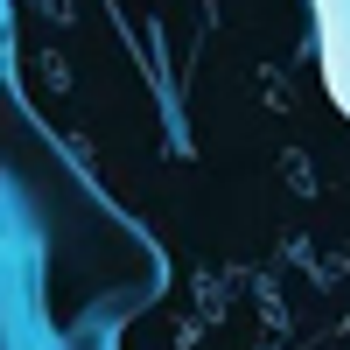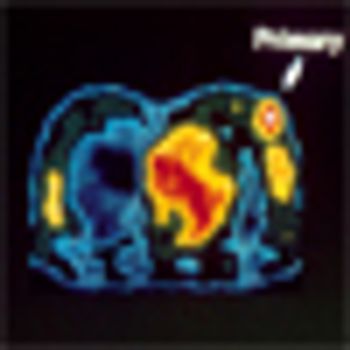
Who’s Haunting Whom? The New Fad in Asylum Tourism
Photography has been a part of the history of psychiatry and mental illness since at least the last quarter of the nineteenth century. French clinicians Henri Dagonet and Jean-Martin Charcot were among the first to use photography in the 1870s to aid in establishing reliable diagnostic criteria for particular maladies. Charcot especially was renowned for taking photographs of patients suffering from hysteria in order to analyze their hysterical episodes, breaking down their postures and gestures into discrete stages in order to enable a more accurate diagnosis.
Photography has been a part of the history of psychiatry and mental illness since at least the last quarter of the nineteenth century. French clinicians Henri Dagonet and Jean-Martin Charcot were among the first to use photography in the 1870s to aid in establishing reliable diagnostic criteria for particular maladies. Charcot especially was renowned for taking photographs of patients suffering from hysteria in order to analyze their hysterical episodes, breaking down their postures and gestures into discrete stages in order to enable a more accurate diagnosis. A recent book by Mary Bergstein, Mirrors of Memory: Freud, Photography, and the History of Art (Cornell University Press), argues that turn of the century photography played a key role in the development of psychoanalysis. And in 1946, Life magazine published the now famous photographic essay "Bedlam" by Albert Maisel, chronicling the miserable conditions in which many psychiatric patients in state hospitals were living at the time in the United States.
So, perhaps it should come as no surprise that photographers – both professional and amateur – these days are showing some interest in the history of psychiatry. What is striking this time, however, is the object of their interests. For some time now, photographers have been visiting asylums and hospitals that have been emptied and abandoned in the wake of de-institutionalization. While many people are well aware of the impact de-institutionalization had on inpatient care – in the United States, there were around 558,000 patients in public psychiatric facilities in 1955; that figure was less than 72,000 by 1994 – lesser known is the fact that many defunct facilities were simply left standing, with some of the furniture, equipment, and even personal effects of patients inside.
These abandoned asylums and psychiatric hospitals have proven to be something of an underground attraction for what some bloggers refer to as "urban explorers." Along with deserted prisons, churches, factories, orphanages, sanatoria, and hotels, unoccupied mental hospitals have come to assume something of a cult status, as a place to catch a glimpse of a lost world and to capture it on film or in digital form (links to some of the websites displaying these photographs can be found
Glancing at the websites of some of these photographers, it is clear that one of the draws for asylum visitors lies in bearing witness to the imagined beauty of debris and relics. The website "
"This site is dedicated to documenting various abandoned places through both text and photographs; recording their transformations through time before they are demolished. The abundance of abandoned asylums and psychiatric hospitals in the New England area create the bulk of the locations here; these beautiful state funded structures are vast and complex, giving insight to both the humanity and mistreatment towards the mentally ill over the past two centuries."
The reference to the "humanity and mistreatment towards the mentally ill" is telling. At the websites I visited, references to the history of asylums and psychiatry mostly riffed on the theme of abuse and neglect, presuming these to be endemic to asylum life.
And herein, I believe, lies one of the chief enticements for these visitors: the promise of some kind of uncanny experience, grounded in a thirst for adventure and thrills (some admittedly break into the buildings they are visiting). The New York-based photographers at "
"There is just something that draws us out into the darkness. Perhaps it's just the feeling you get on a night where the thermometer doesn't go past 7 degrees. Maybe it's that night photography requires more of a commitment one must linger around one location for 3 hours or more just to get one good shot. Whatever it is, we find ourselves out under the full moon with cameras in hand."
The invocation here of the full moon is no accident. Many, perhaps even most, of the photographs generated by those poking around abandoned asylums appropriate a horror film aesthetic. In an
To be sure, there are sites, such as "
Abbey, 02-Aug-2010 02:42
OMG!!!! Ghost Hunters went there at night and it was freaky!!but really kool
Jace, 07-Feb-2010 11:11
Wow these photos are disturbing and yet so moving. I would find it hard to enter such a place knowing that horrible things had happened to people here. You are both very brave!
Phill, 04-Nov-2009 06:42
Went to a haunted abandoned mental asylum in australia last night with all of my friends and i am telling you now i have never experienced anything like it in my life, saw ghosts, felt ghosts saw things move now this shit interests me so much, pretty cool.
Again, there are responsible amateur and professional photographers such as
Earlier in history, it used to be acceptable for members of the public to visit madhouses and asylums and to there observe the premises and their inhabitants. Some, if not most, patients considered this form of asylum tourism an intrusion. I can’t help but see the camera-carrying "ruins tourists" and "urban explorers" of today – both professional and amateur alike – as not terribly different from their earlier counterparts, eavesdropping on the lives of others for what amounts to little more than titillation and entertainment. Yanni is quite correct in her analysis: these excursions are really best understood as incursions, serving only to further mystify and marginalize individuals and groups who historically have been seen as alien to accepted society.
In this regard, we would all be better served considering how former residents of these facilities might respond to these visitations. One winter day around 1852, a young woman and her companions from the area insisted on touring the Utica State Lunatic Asylum in upstate New York. She proved to be disappointed by her visit, she later reported to the editor of the patients’ monthly periodical The Opal, owing to the fact that "for all we could see, the patients look and act like other people. We asked our guide, who was civil enough, if he wouldn’t take us where we could see something. He politely bowed us away to the sleigh." The editor of the paper responded to the young visitor’s letter, reminding her and other readers what was often overlooked by outsiders:
"Could she see the heart aching with grief which will not and cannot be comforted – or withered by long and solitary indulgence in thoughts of the neglect or scorn of the world, which, whether real or imaginary, cannot be removed by the sympathising tones nor cheering smiles or that love which always soothes and animates a mind in trouble – or torn and racked by passions which are always contending with each other, and, having no reality for their object, may never give any outward manifestation of the agonizing tumult which reigns within!"
Newsletter
Receive trusted psychiatric news, expert analysis, and clinical insights — subscribe today to support your practice and your patients.













